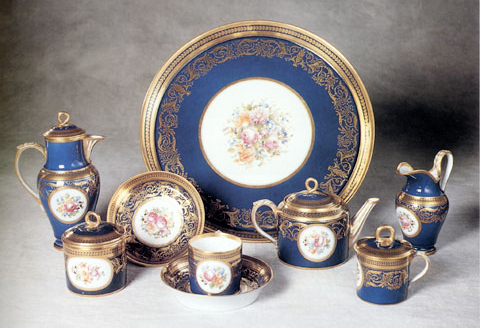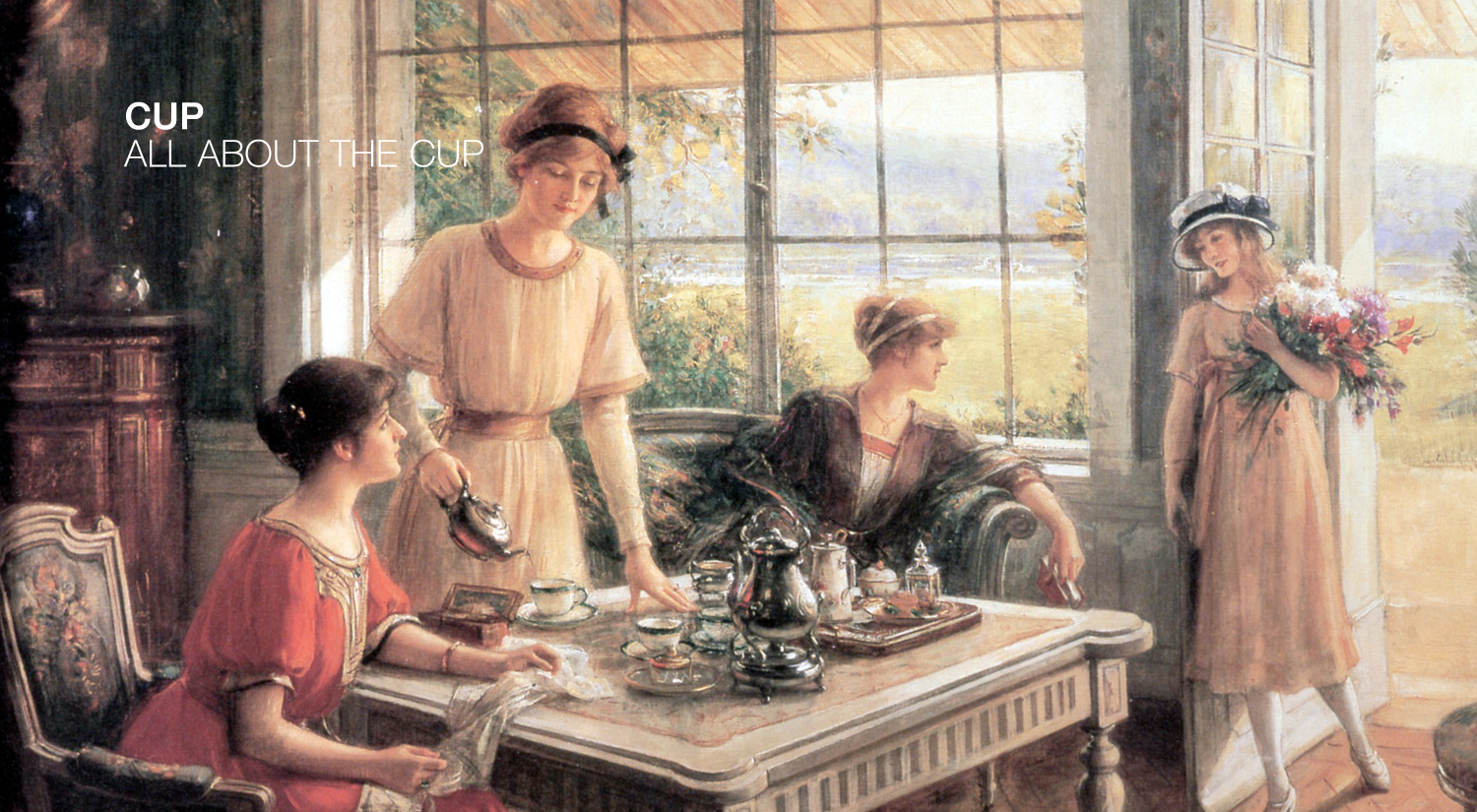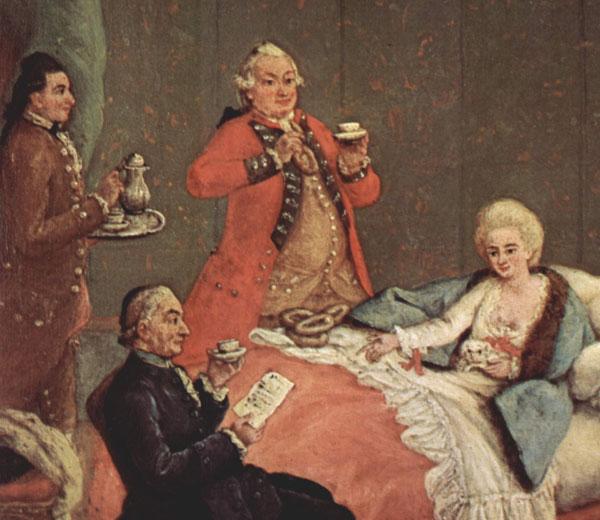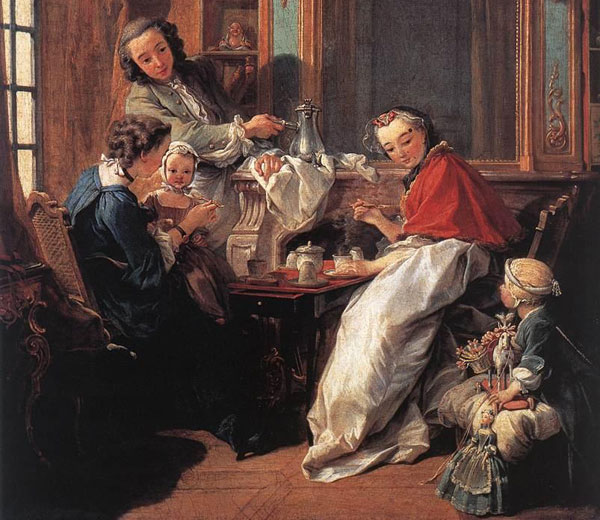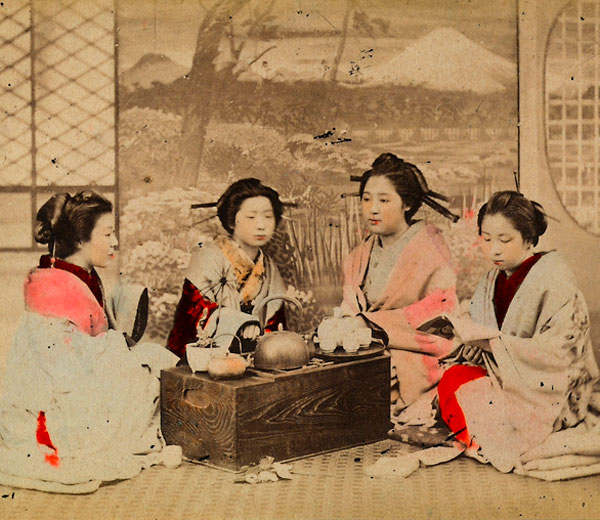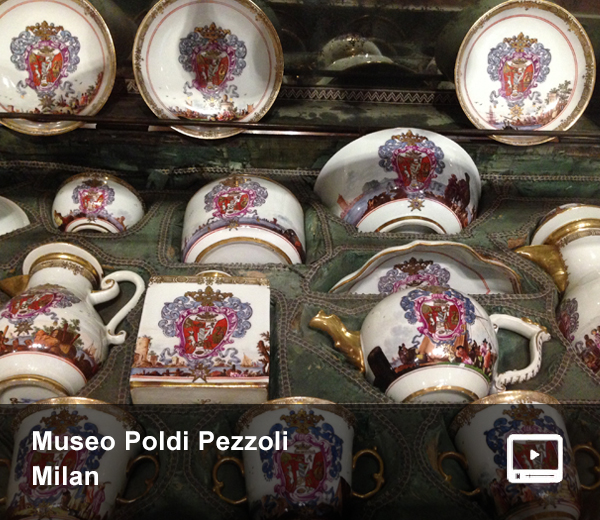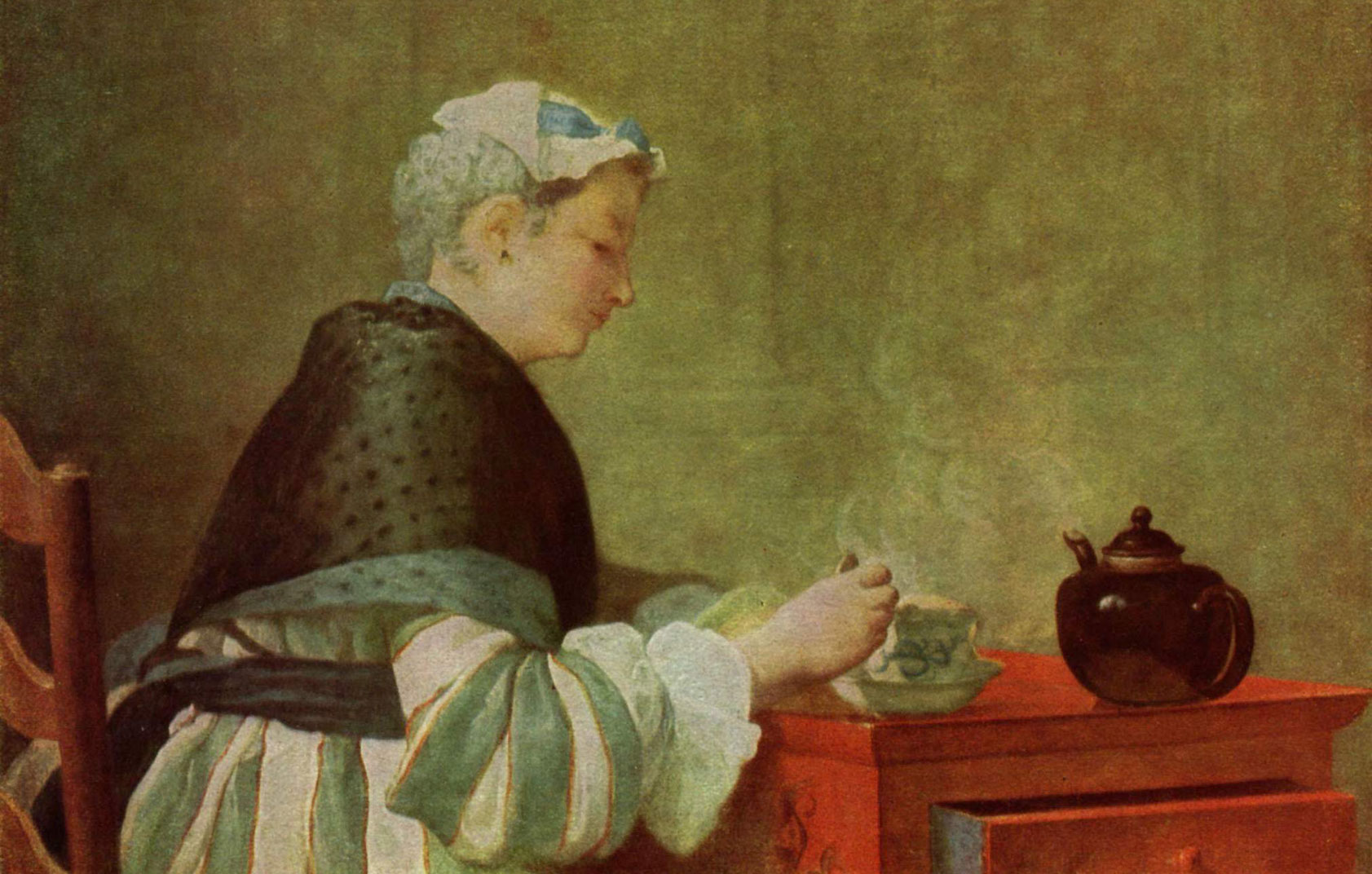
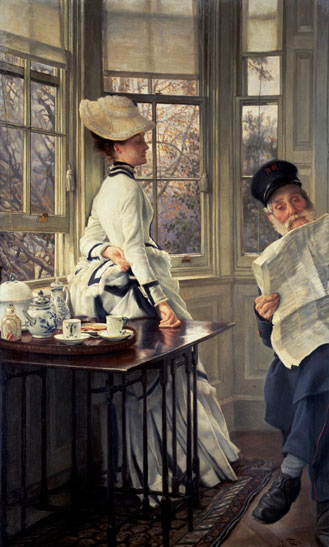
James Tissot, Reading the News, c. 1874. Private collection
St Petersburg Imperial Porcelain Factory, Tea set belonging to Emperor Paul I, 1800. Pavlovsk (St Petersburg), Pavlovsk State Museum
Top: Jean-Siméon Chardin,Lady Taking Tea, 1735. Glasgow, The Hunterian Museum and Art Gallery
Bottom: Albert Lynch, Women Taking Tea, 19th century. Lima, Museo de Arte
CUP. THE ART OF TEA AND CHOCOLATE
In today’s world the cup greets us when we wake up in the morning and accompanies us during pleasant afternoon breaks. The large breakfast cup, the practical personalised mug (often a popular merchandising tool) and the classic cup and saucer, designed primarily for afternoon tea or hot chocolate, are all commonly found on our tables.
From the 18thn century to the early 20th century, taking tea was a social activity among aristocratic and upper-middle-class circles, providing an opportunity to talk and exchange information that might lead to profitable relationships or to the formation of sentimental attachments.
With the passage of time and changing social dynamics and relationships, the cup increasingly became the companion of agreeable and reflective solitary moments, especially if linked to drinking tea or tisanes. Such moments of intimacy that, even if exceptions, can be observed in some wonderful records of the modern age, such as the painting by Jean-Siméon Chardin, Lady Taking Tea (1735), or in the words of the English writer Thomas De Quincey who, emphasising how tea fosters a reflective atmosphere, observed: “Tea […] will always be the favourite beverage of the intellectual”.
